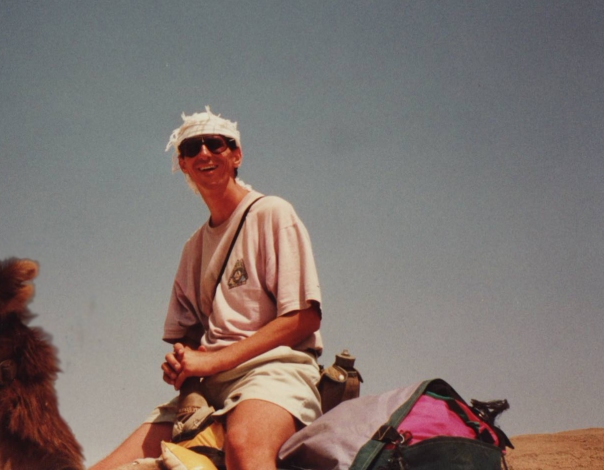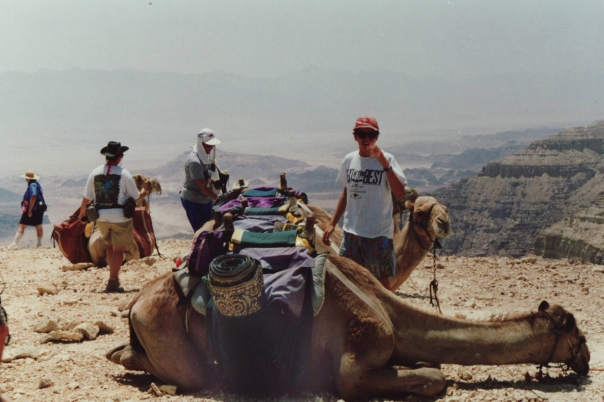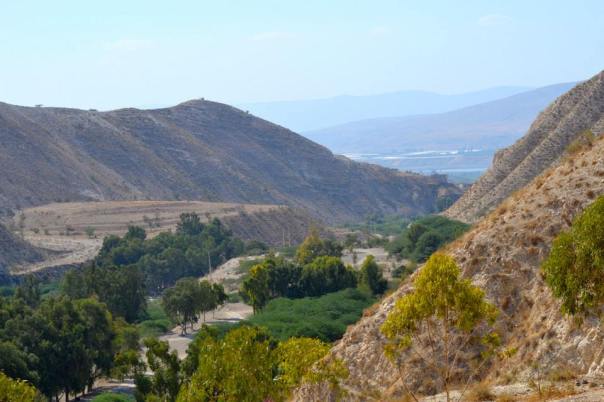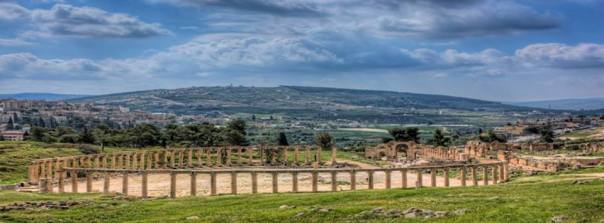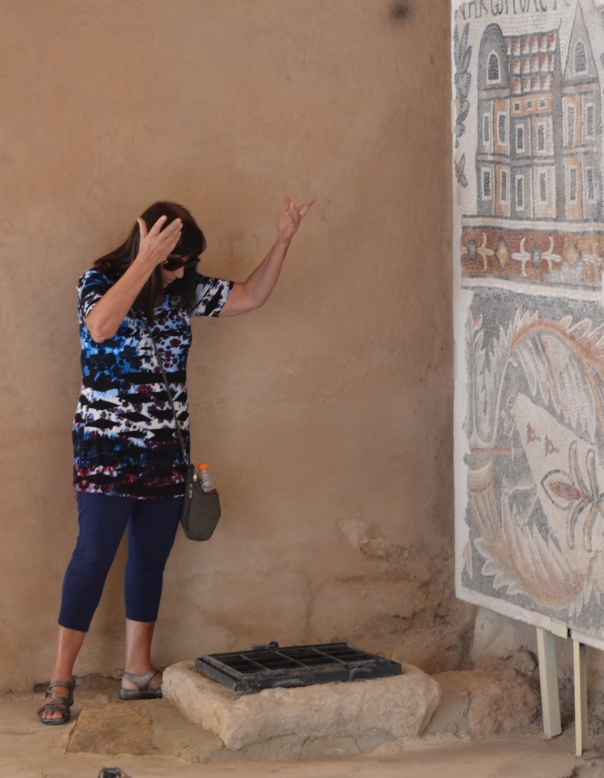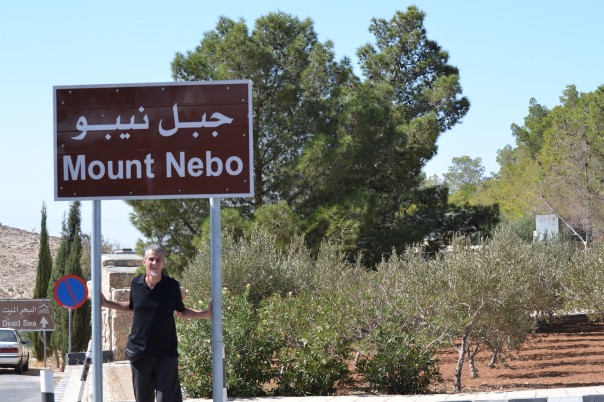Blog Archives
Egypt, My People!!
Without a doubt you have seen the tragic and disturbing news about the Coptic Christians that were brutally murdered by ISIS in Libya. Our hearts are with the families — and all of Egypt — who are mourning the loss of their beloved ones. God bless each one of them today.

Neighbours and friends of the relatives of Egyptian Coptic men killed in Libya attend mass at a church, as a banner with pictures of the men who were men is displayed on the church wall, in El-Our village, in Minya governorate, south of Cairo February 16, 2015. (Photo: REUTERS/Asmaa Waguih, EGYPT)
Pope Francis did not shy away from the clear religious motivation behind the mass beheading. “They were murdered just because they were Christians,” he said during a meeting with a Scottish church leader, calling the victims “brothers, who died simply because they professed their faith in Jesus Christ.”
Who are the Coptic Christians?
In Egypt alone there are estimates of 9-15 million Coptic Christians, about 10-20% of the population. The Coptic Church community is one of the oldest in the Middle East. It is thought to believe that St Mark took the Gospel to Alexandria, Egypt shortly after the ascension around 42 A.D.

Ancient Alexandria, Egypt
By the 2nd century, Christianity began to spread to rural areas and the Scriptures were translated into the local language known today as the Coptic language, but then known as the Egyptian language. By the beginning of the 3rd century A.D., Christians constituted the majority of Egypt’s population. You can read more about the history of the Coptic church on wikipedia.
The Ancient Church of the Middle East
It is important to note that the target of ISIS has been the ancient church of the Middle East that has been unconquered by Islam through the centuries— slaughtering Christians of the ancient church of Assyria in Northern Iraq, and the Coptic Christians of Egypt. Islam was unable to completely conquer the Coptic Church of Egypt, and so they continue to this day to persecute, kill them, and burn their churches. There seems to be an intentional strategy of these extreme Islamic radical groups to go after Christians in Islamic nations in particular.
Another of their intentions is to target Islamic nations that have partnered with the West: Jordan, Iraq, Egypt, Turkey, and even Saudi Arabia.
With the rise of attacks against the Jewish communities in Europe as well, it is clear about the brutal agenda of these radical Islamic groups against Jews and Christians emerging around the globe.
How to Pray
We count it a privilege that God has allowed us to bless these nations where we have traveled and lived and have come to know many friends of the Middle East over the years—Turkey, Syria, Lebanon, Jordan, Iraq, Egypt, Israel, Iran. One of the things God has put on our hearts as we have been engaged with the Middle East, and Europe, is to pray God’s blessings on these nations. We have also been praying specifically for revival, that they will return to their spiritual roots of faith in Jesus. We have walked these lands and prayed on site in the Muslim, Christian, and Jewish communities for God’s purposes to be realized.
Pray especially for the Christians of these nations who are facing persecution as believers in Jesus.
Let’s agree together in a prayer for the nations of the Middle East:
Father, comfort the Egyptian families who have just lost their loved ones in this brutal act. We pray you will surround them with Your presence today. Continue to strengthen Egypt so that she will arise to the destiny You ordained for her at this time in history. Bless the church of Egypt – and in particular, all of our Egyptian friends!
Bless the church of Jordan today! Bless the King, the nation, his parliament, the economy, and all those agencies who are assisting the hundreds of thousands of refugees fleeing ISIS.
We pray for the Assyrian, Iraqi, Syrian and Lebanese Christians, in particular, and ask that you make provision for all they need today. Protect them – and pour out Your goodness upon them.
Bless Israel today and surround her borders securely as the mountains surround Jerusalem. Bless the Body of Messiah of Jewish and Arab believers. May they demonstrate Him in creative ways.
Father, glorify Your name through the church of the Middle East today. Comfort the hurting, and provide for the all those who are in need today. May You be revealed as the Messiah and Lord of all. Thank you for all You are doing in these nations that You love.
In the name of Jesus/Yeshua/Yesu3, amen!
THE SACRED BRIDGE
Adventure on the ancient main trade routes of the Middle East.
A relatively thin slice of land along the Mediterranean Sea has been called, “The Sacred Bridge,” by scholars. In the place where nations have rubbed shoulders with one another for thousands of years, the changes have been only in the surface of the highways: narrow dirt paths gave way to Roman paving stones, later to asphalt, then to super-highways. A region with thousands of years of history make the mind reel for those of us birthed in a nation that is a mere 238-years old.
The vast desert to the east of the bridge kept international trade routes in a narrow corridor near the Mediterranean Sea. The Via Maris, “the Way of the Sea”, (in aqua) runs parallel to the Mediterranean Sea near the coast. The Kings Highway (in red) runs along the crest of the mountains of Moab and Ammon on the east of the Jordan River and Dead Sea (known as the “Salt Sea” in biblical times). The Spice Route (purple) ran from the Arabian Peninsula through Petra, intersecting both the King’s Highway and the Via Maris, then on to the sea at the southern-most port at Gaza.
By no accident, the Sacred Bridge was the site of God’s greatest advertising campaign. The choice was dictated by location — the place where the nations continually passed by. In the midst of cultures given to the worship of many gods, God’s people living in Jerusalem stood as a beacon of truth: the worship of One God, the only God. The book of Acts, chapter two, reads like a United Nations gathering on the day in which God’s fire was poured out. The nations mentioned ring the Sacred Bridge like the spokes of a wheel. No one present would return home silent about what they witnessed that day. In the next week over 8,000 locals and visitors came into the Kingdom of God and were publicly baptized.
This bridge plays no less a role in the future than it has in the past in spite of modernization and progress. Isaiah 19 spells out it’s importance explicitly.
On that day there will be a highway from Egypt to Assyria. Assyria will go to Egypt, Egypt to Assyria, and Egypt will worship with Assyria. On that day, I Israel will form a triple alliance with Egypt and Assyria—a blessing within the land. The Lord of Hosts will bless them, saying,
‘Egypt My people, Assyria My handiwork, and Israel My inheritance are blessed'” (Isaiah 19:23, 24, HCSB).
I am not alone in wanting to visit, see, smell, taste and experience the cradle of history. It is alive with the glory of our God, recorded in the Love Letter He left us. Millions come annually, in spite of danger and turmoil, to breathe in the most historically-famous place in the world.
It’s a place where the “Greats” passed through: from Alexander the Great to Napoleon Bonaparte. However, they were mere visitors on a web of ancient highways taking goods and people from Africa to Europe and Asia. A network of byways connect the major highways and have remained as ancient as they were thousands of years ago. It’s to this place that my wild heart is drawn. I love the adventure and the extreme heat, scorpions and dangers of that famed dusty path known as the “Spice Route”.
CAMEL -TREKKING THE ROUTES
Carol and I have recently traveled the King’s Highway through Jordan: from the Red Sea Port, to Saudi border and all the way up to the Syria border in the north. Many years ago, before fully understanding Isaiah 19, I led a group of adventure-seekers on a three-day camel trek on the Spice Route in the Aravah on the Israeli side. This route runs perpendicular to the King’s Highway and the Via Maris, and crosses both of those famous routes.
The photos above show Seffy, our camel-trek guide, as he gives important instructions about the dangers of the desert before we leave the safety of the encampment base on the crest of the mountains above the great African Rift. Lots of sunscreen, water, hats, and most of all, loads of fun. Never forget the fun! Then, it’s off across the desert we go. Velvety hills, carved into terraces by the tiny feet of hundreds of thousand of sheep and goats over the centuries, create a photographer’s paradise.
A normal hike, or desert journey, is magical in and of itself, but, to know you are on the same route trodden by great men for several thousand years is overwhelming.
Each two people are assigned a camel. One will walk, the other rides, trading off every few hours. There are ups and downs for our ships of the desert. We cross wadis (dry river beds) and climb mountains on the ancient dusty paths. Our guide points out an almost perfectly round flat stone. We learn that this is an ancient directional road sign that has been used for thousands of years. Upon closer inspection we see ancient writing scraped onto the surface of the stone.
Well-acquainted with the desert, our guide, Seffy, knows where to find hidden agricultural tools in cracks and crevices along the way. This winnowing fork and the ancient road sign deepen our sense of awe of where we are.
MEALS IN THE DESERT
The nuts and bolts of the trek were setting up camp late in the afternoon, baking bread like the Bedouins on a large metal wok turned upside down over the fire pit, eating with the hands group style, and of course resting in the heat of the day under a shade anchored by four camels at each corner.
Then instructions for bedding down at night: “Check your sleeping bag area for scorpions!” Very important. The yellow ones are small but very poisonous. Sure enough, one of our ladies slept on top of one. Thankfully, no harm done; the scorpion stayed put all night long.
Our guide tells us of the camel caravans, numbering as many as two thousand manned by only 20 men, bringing salt from Ethiopia. The worth of such a caravan could reach as much as $12-million dollars in today’s currency. A tribe of Nabatean desert dwellers controlled the Spice Route as it wound its way through what is now south-central Jordan. These desert dwellers knew the secrets of the arid wilderness–where to find water and food supplies. The Nabateans made their living by taxing the traveling caravans who had to pass through their territory.

The Ethiopian desert is a harvest of salt to be transported by camel caravan. Only a few men were needed to tend large numbers of camels.
Along our route were ancient Khans (simple Inns for lodging and food for caravaners). Some ancient structures remain partially intact. The antiquities authority has provided information stations along the way to make the journey more meaningful.

Few tours to Israel have time for these journeys. The map shows two spice routes from Jordan through Israel to the Mediterranean port.
Our route towered above the canyons. Staying high on the mountain crest was the only way to keep cool as valley floor temperatures could reach 115-degrees fahrenheit.
ANCIENT CHRISTIAN CHURCHES
In all this history and beauty, one thing has struck Carol and I repeatedly and that is the history of the spread of Christianity in this Sacred Bridge. Our journey through Jordan was conspicuously punctuated with that fact through the ancient Christian church mosaics unearthed by archaeologists from the north to the south. Though Jordan is an Islamic country each hotel we stayed in proudly displayed large mosaics on their lobby walls. Each of these mosaics was from an ancient church. The heritage of the area is clear: Christ reigns there.
Our mandate is to declare Him Lord of the region and call forth this ancient heritage and inheritance once again until the Light of the world is once again blazing bright.
The Church of Jerusalem
In the Cardo, in the Jewish Quarter of Jerusalem, there is also a mosaic uncovered in Madaba, Jordan, near Mount Nebo. It is a mosaic map of ancient Israel focusing mostly on Jerusalem and the Nea Church there in 540 AD.
Sixth century Jerusalem is depicted in the center of this mosaic map. The red lettering in the white area at top reads, “Hagia Polici Yerusalem” — “The Church of the City of Jerusalem,” The main street of Roman times, the Cardo, is central in the mosaic: the colonaded shopping mall that bisected the city.
A Sacred Bridge of the Future
The story of the Sacred Bridge is not finished. What seems to the thousands of tourists that visit, a historical era of the past, has yet to see its crowning splendor. Israel’s own, Ben Gurion declared that the future of the region would be brought to fullness when technology brought life and agriculture to those deserts. There are those who know, and can appreciate, what God has proclaimed about the region. Not just the bridge itself, but the surrounding neighboring nations and peoples being pulled into the vortex of His glory: Egypt, Jordan, Israel, Assyria (Syria, Lebanon, Nineveh, and Iraq. Though the boundary lines of the region have changed multiple times through the centuries, the dawn of God’s intentions for His people remains firmly intact. He sends us as forerunners to make the path straight and prepare the way.
Pray for the peoples of the region as God draws all men to the light of His glory.
Tale of Ten Cities
Little did Carol and I know we were on the trail of a massively demon-possessed man. He was a real poster-child of what some might call “multiple-personalities” in the modern psychology world. From a reliable documented source of a Roman “legion”, we can conclude that perhaps as many as 6,000 demons inhabited his body.
BORDER OF ISRAEL
Carol and I wound our way around the rolling hills and valleys of northern Jordan searching for the ancient church sites.
Our first stop was the border of Jordan and Israel which is high up the mountain overlooking the south part of the Sea of Galilee. There we prayed over the entire region. It was from here, no doubt, the demoniac would have gone down the mountains to meet Yeshua and His disciples as their boat crossed the Sea of Galilee to the “other side.”

Ron pointing toward the south part of the Sea of Galilee on the Jordanian/Israeli border in the north
PELLA
We wound our way down the mountain to locate a very small village called “Pella” with ancient churches. This journey proved to be quite challenging with a limited map and no GPS but we loved the adventure – and the gorgeous terrain.
We finally hired a taxi to lead us to the the area which now is a Palestinian refugee camp/city. Finding the ancient church site on the highest part of the city we prayed and proclaimed over the land that was once Christian – calling back the inheritance of the region.

Looking over the ancient site of Pella – site of some of the most ancient churches of the Decapolis. This may have been the area where Legion would have called home.
As we left Pella we returned north and realized that the region we had been in that day was called Gedara. It was then that Carol and I both realized at the same time, “This is the place region where “Legion” was from!”
After the deliverance of Legion, Jesus helped him put on clothes and they sat together quietly. What would they have talked about? Perhaps Jesus renamed him at that time by giving him his true name — the name the Father in Heaven knew him by. No doubt it would have displaced the name he was known by up to that point: “Legion”— one demonized by thousands.
His new name would have included His God-given purpose on Earth: one who bears the testimony of Jesus.
“Let me follow you where you are going, Yeshua!” Legion implored as he walked alongside of Him holding tightly onto His robe.
“No, Legion. I have a much more important task for you to do,” Yeshua responded tenderly. Taking ahold of both of his shoulders and looking him deep into his eyes Yeshua instructed him, “Return home to your people and tell them all the good things God has done for you.” With that, Yeshua threw back His head and laughed a deep belly laugh. Legion laughed too— as did everyone with him. You could feel the joy explode into the atmosphere. Satan’s kingdom had just been plundered inside the Decapolis. Legion had been personally commissioned by Yeshua to return home and establish God’s Kingdom throughout the region.With this commission, Legion was now Spirit-empowered to bring the mandate of Jesus back to his hometown with the Good News of Isaiah 61.
“The Spirit of the Sovereign LORD is upon me, for the LORD has anointed me to bring good news to the poor. He has sent me to comfort the brokenhearted and to proclaim that captives will be released and prisoners will be freed” (Isaiah 61:1, NLT).
The Decapolis was completely evangelized by this one man’s testimony, and we were seeing the tangible evidence of it.
RIHAB: OLDEST CHURCHES EVER FOUND
The next day we were searching for a small village called Rihab where an underground cave had just been deemed the “oldest church” found in the world. We ran across the London Telegraph article with its photo as we planned our itinerary of our upcoming visit to Jordan. Our interest was peaked as we had planned to visit and pray at the ancient churches of Jordan, and Rihab was added to our “must see” list. The cave “church” had discovered under the ruins of Saint Georgeous Church, which itself dates back to 230 AD.
When all the evidence is in, it may mean the earliest known place of worship outside Jerusalem has been discovered. Abdul Qader al-Husan, head of Jordan’s Rihab Center for Archaeological Studies said,
“We have evidence to believe this church sheltered the 70 disciples of Christ.”
A mosaic found in the church describes these believers as “the 70 beloved by God…” The archaeologist believes they fled persecution in Jerusalem. It seems the Jewish believers fled to this region across the Jordan River. We would be visiting one of the oldest places of worship for Jewish believers! We printed off the Google Earth maps of these ancient sites that we hoped would give us clues as we made our way with our rented car through Jordan.
Our little map of Jordan was not adequate to fully navigate to these off the road archeological sites on our itinerary. We got lost several times but it became a fun part of our adventure to inquire of villagers along the way. After several dead ends and traveling in obvious circles this particular morning, many questions for directions of the villagers, and ogling bedouins harvesting olives just as they would have 2,000 years ago in villages, we finally arrived in a little town with a round-about.
I almost shouted, “Carol, this is it! Look!!!” as I handed her the satellite photo/map. “Here’s the roundabout — just like on the map!” Sure enough, we had found the ancient city of Rihab.
We pulled up to a coffee kiosk and parked our car. It appeared that the elders of the village had gathered outside of this kiosk/coffee shop to catch up on village news and socialize. They were sipping cups of steaming Turkish coffee.
“Buy us some Turkish coffee!” Carol suggested.
With that, I walked up to the kiosk window and ordered our coffee “to go.” Seeing the elders and others gathered at the outside “cafe” I asked them in Arabic about the ancient churches of Rihab. With much gesticulation and a few Arabic phrases we were able to communicate what we needed. They communicated that the site was closed–and locked. We were a bit disappointed at this news but this was a God-adventure and He had only good things in store for us. I was determined to find the site, however, and at least look at it. The man making our Turkish could have won the world prize for S-L-O-W. I was chomping at the bit as I waited for the coffee. We had much to accomplish that day but we definitely were not leaving without seeing the most ancient churches of Rihab!
Finally, after waiting more than 15 minutes I was handed two Turkish coffees, and simultaneously a young man who spoke English arrived. He held up the key to the ancient archeological site. Success!! We were thrilled. We bid the elders and kiosk owners goodbye with lots of laughter and hand shaking, and off we went with Ahmad, our young tour guide, piled into our rental car.
When we arrived at the ancient church site, we met up with two muslim women who worked for the Ministry of Antiquities. They were very happy to finally have tourists and were excited to show us all around the church and church grounds. They brushed away the protective sand on the floors which revealed the beautiful mosaic floor.
Next we were taken to the newly discovered cave dated from around 40 A.D — shortly after Jesus’ resurrection. They told us that those from Jerusalem had fled to these villages to escape persecution. It was then that we realized the Jewish believers in Jerusalem would have been safe from the Jewish leaders seeking to jail or kill believers in Yeshua. Imagining those believers in Yeshua who lived and worshiped in this place, and the cost of giving up life as they knew it to do so, was overwhelming.

Carol standing under the one skylight inside the ancient church of Rihab where believers in Yeshua escaped from Jerusalem in around 40 A.D.
Our Muslim tour guides were glowing at our excitement. Then they shared something more, “In this area alone, there are 70 other churches like this one.” We were stunned. It was then that we realized that the “demonaic of the Gerasenes from the Decapolis” had been here too. This area too was also a part of the Decapolis in ancient times.
JERASH
The final day we visited the center of eastern part of Jordan.
The famed city of Jerash in the center of northern Jordan is one of Jordan’s key tourist sites as well as the site of a nation-wide Jordanian festival. Jerash, according to Jordan’s tourist bureau, comes from another name “Gerashe” and is also considered another town of the demonaic delivered by Jesus.
Carol and I noted before entering the archaeological site of Jerash that most likely there would be a church there even though the main attractions are the temples of Zeus and Artemis. Why did we think this? Because everywhere we had gone throughout the country of Jordan, scores of churches had been uncovered from ancient times! With its close proximity to Israel across the river, it was clear that present-day Jordan was a thoroughfare of Israeli’s, and many other nations, along the King’s Highway.
Not only did we find one church at Jerash, but eleven churches ringed the temples of Zeus and Artemis right on the archaeological site. The Cathedral, the Church of Theodorus, the Church of Cosmos, Damian, John, George, Marian, Peter and Paul, Bishop Genesuis, Bishop Isaiah, and the Church of Propylaea…just to name of few (these are not just names, but actual churches).
It was a joy to discover on our trip that Jesus was worshiped throughout the land of Jordan. Though it is now veiled in a cloak of Islam, the cloak is not theirs. Our mandate is to call back their heritage in Jesus.
DELIVERED TO DELIVER OTHERS
We marveled that although we do not even know the real name of Legion, it appears his testimony helped to plant more churches than any others who were commissioned by Yeshua. We traveled through northern and central Jordan in awe of a shadowy figure from the pages of the Gospel who was not allowed to follow after his Beloved Deliverer and Savior, but instead, was commissioned to deliver thousands of others into freedom drawing on the power of his own deliverance.
The presence of the testimony of Jesus is alive and well in Jordan even today.
Sing to the Well
Our first stop was Madaba en route to Mt Nebo. This is an ancient Moabite city mentioned in the Bible in Numbers 21:30 and Joshua 13:9. We discovered ancient Byzantine churches there from the 2nd century. In the archeological site they had several wells and we were struck with the fact that believers in Jesus once worshiped here. It was holy ground.
THE WELLS
I was also reminded of the biblical account when the Israelites wandered the desert and how many times they were in desperate need of water. As the tribes of Israel moved into the land of Moab, they needed water—again. But interestingly, this time, they did not react violently towards Moses or Aaron or with unbelief towards God. Apparently, they decided that returning to Egypt was not an option anymore.
From there they went to Be’er, the well the LORD told Moses about, “Gather the people so that I may give them water.”
Then Israel sang this song:
Spring up, well—sing to it!…(Numbers 21:16-18, HCSB)
Instead of grumbling and complaining about what they did not have, the Israelites chose to trust God – and their leaders. They chose to sing to their provision—in joy!—with the expectation of an answer to their need.
And God provided so miraculously—enough water to care for all the tribes of people, cattle, etc…in the middle of nowhere, from an unexpected source. That’s our God. His provision is always more than enough.
While visiting Jordan, our prayer declaration was to call forth this region back to its heritage in Jesus the Messiah. So I sang to all the ancient wells: “Spring up O well!! Refresh this land with Living Waters!”
Sometimes you have to do an act in the physical to represent what God is doing in the Spirit.
We can peer into the past and know that God is restoring His people back to their heritage, their inheritance — back to Himself. That is true with the church of the Middle East.
Jesus, the Light of the world, is rekindling the fire of His passion and love to His Bride in the Middle East.
The corridors of the archeological site at Madaba.
We are walking on ancient stones where once His people worshiped. If these stones could talk.
Our prayer as we stood on this ancient site:
God, strengthen the church of Jordan with the passion of Your love, all for the glory of Jesus. Amen.
How Does God Speak?
How does God speak? A couple of weeks before leaving for Jordan I nearly hit a peacock in the highway as I was driving to church. Turning on a secondary street toward church I nearly hit another peacock. What???? This definitely got my attention.
Then, as Carol and I arrived at the San Francisco Airport to leave for Jordan, the San Francisco Museum of Art was doing a major exhibit by Tiffany, the famous stained-glass window artist. The main advert for the exhibit is a 12-ft.-high peacock in Tiffany stained-glass. Peacocks? again? This caught my full attention. I pay attention to such things as they become sign posts along our way.
On our journey through Jordan, Carol and I spent about 2 hours searching for the small ancient village of Rihab–site of the oldest church ever uncovered in the region. Driving around the hills of north Jordan, we decided to stop for coffee. To our surprise, the man making our coffee took about 20 minutes. But we have learned to relax with such delays and have come to appreciate the perfect timing of God’s leading.
I began to inquire of the village elders sitting in the coffee shop sipping their hot steaming cups of coffee about the ancient church ruins. One of the elders made a quick cell phone call and soon a young man arrived at the shop. He was the only one in the village with the keys to the gate!
We arrive at the site just the short time span in which two archaeologists were showing three people around the ruins. Had we come earlier–even 5 minutes–we would have missed them.
One of the archaeologists stooped down to the sandy ground and brushed away the layer of protective sand spread over a beautiful mosaic floor and uncovers two peacocks. Peacocks?? What?? I began to laugh and tell the story of how I almost hit the two peacocks on the road near my home.
One of the ladies standing by began to cry and she began to tell her story. God had always used peacocks — in some way– to tell her how much He loved her. At this testimony, Carol took her in her arms and began to minister to her the Father’s deep love. More weeping.
The day was timed perfectly by God, but we were unaware of the carefully orchestrated details He had planned out. What a glorious day of God’s perfect leading!
Watch for signposts of God confirming your way.
Jordan: Walking the Land
Ron and I went to Jordan to pray at this critical time in the region. This was our third trip to Jordan in a year.
We learned so much as we traveled by a rented car from Amman to Mount Nebo to the Dead Sea.
Then we drove along the Dead Sea to the southern border of the Port of Aqaba on the Red Sea.
Then we took the King’s Highway up to Amman passing by Wadi Rum and Petra.
We traveled up to the northern borders of Syria and Israel.
We had the opportunity to visit some of the most ancient churches in the region and pray for the heritage of the Christian community.
It was one of the most amazing journeys we have ever done.
God bless the King of Jordan, his household, his government and the citizens of Jordan.
We will visit again!
To the Church in Egypt
TO THE CHURCH IN EGYPT :::
We, the CHURCH around the world, are WITH you and are praying for you!! God said, “I will never leave you nor forsake you!” HE is WITH you. We pray COURAGE and BOLDNESS for you the CHURCH in EGYPT and we pray CONFUSION CHAOS in the camp of the enemy today so they are not successful in their evil intentions planned against you.
May the Holy Spirit encourage your hearts today and overwhelm you with His LOVE, displacing fear.
We declare that God will demonstrate Himself STRONG in and through you as you lift up His NAME in a great shout of praise over your cities!!!
God, we ask that You protect Your people and glorify Your name in and through them, in Jesus’ Name, Amen!!!
